
PIA01206: Jupiter's Equatorial Region in a Methane band (Time set 3)
|
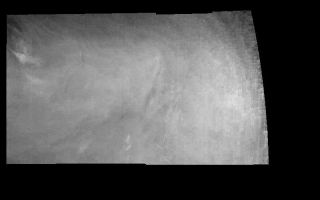
PIA01207: Jupiter's Equatorial Region in a Methane band (Time set 3)
|
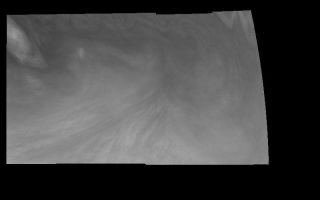
PIA01208: Jupiter's Equatorial Region in Violet Light (Time set 3)
|
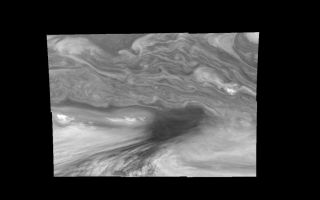
PIA01209: Jupiter's Equatorial Region in the Near-Infrared (Time set 4)
|
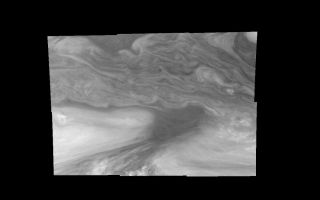
PIA01210: Jupiter's Equatorial Region in a Methane band (Time set 4)
|
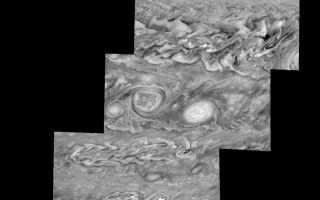
PIA01227: Jupiter's Southern Hemisphere in the Near-Infrared (Time Set 1)
|

PIA01228: Jupiter's Southern Hemisphere in the Near-Infrared (Time Set 2)
|
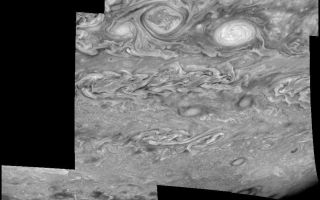
PIA01229: Jupiter's Southern Hemisphere in the Near-Infrared (Time Set 3)
|
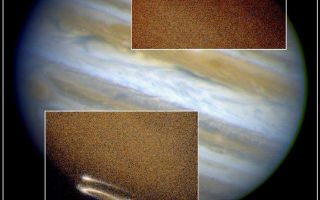
PIA01254: Hubble Provides Complete View of Jupiter's Auroras
|
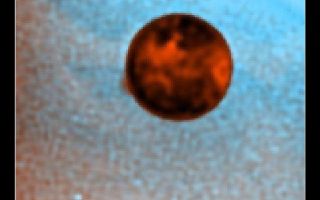
PIA01256: Hubble Captures Volcanic Eruption Plume From Io
|

PIA01257: Hubble Images Reveal Jupiter's Auroras
|
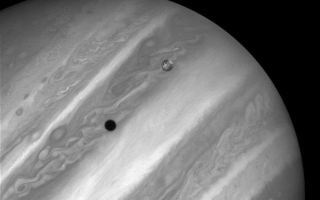
PIA01258: Rare Hubble Portrait of Io and Jupiter
|
![<h1>PIA01259: Hubble Views the Galileo Probe Entry Site on Jupiter</h1><div class="PIA01259" lang="en" style="width:800px;text-align:left;margin:auto;background-color:#000;padding:10px;max-height:150px;overflow:auto;"><p>[left] - This Hubble Space Telescope image of Jupiter was taken on Oct. 5, 1995, when the giant planet was at a distance of 534 million miles (854 million kilometers) from Earth. The arrow points to the predicted site at which the Galileo Probe will enter Jupiter's atmosphere on December 7, 1995. At this latitude, the eastward winds have speeds of about 250 miles per hour (110 meters per second). The white oval to the north of the probe site drifts westward at 13 miles per hour (6 meters per second), rolling in the winds which increase sharply toward the equator. The Jupiter image was obtained with the high resolution mode of Hubble's Wide Field Planetary Camera 2 (WFPC2). Because the disk of the planet is larger than the field of view of the camera, image processing was used to combine overlapping images from three consecutive orbits to produce this full disk view of the planet.<p>[right] - These four enlarged Hubble images of Jupiter's equatorial region show clouds sweeping across the predicted Galileo probe entry site, which is at the exact center of each frame (a small white dot has been inserted at the centered at the predicted entry site). The first image (upper left quadrant) was obtained with the WFPC2 on Oct. 4, 1995 at (18 hours UT). The second, third and fourth images (from upper right to lower right) were obtained 10, 20 and 60 hours later, respectively. The maps extend +/- 15 degrees in latitude and longitude. The distance across one of the images is about three Earth diameters (37,433 kilometers). During the intervening time between the first and fourth maps, the winds have swept the clouds 15,000 miles (24,000 kilometers) eastward.<p>This image and other images and data received from the Hubble Space Telescope are posted on the World Wide Web on the Space Telescope Science Institute home page at URL <a href="http://oposite.stsci.edu/" class="external free" target="wpext">http://oposite.stsci.edu/</a>.<br /><br /><a href="http://photojournal.jpl.nasa.gov/catalog/PIA01259" onclick="window.open(this.href); return false;" title="Voir l'image PIA01259: Hubble Views the Galileo Probe Entry Site on Jupiter sur le site de la NASA">Voir l'image PIA01259: Hubble Views the Galileo Probe Entry Site on Jupiter sur le site de la NASA.</a></div>](system/html/PIA01259-605ad1e1.jpg)
PIA01259: Hubble Views the Galileo Probe Entry Site on Jupiter
|
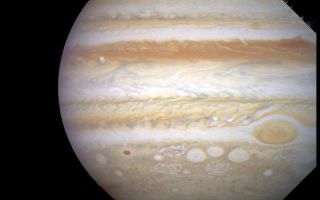
PIA01262: Hubble Tracks Jupiter Storms
|
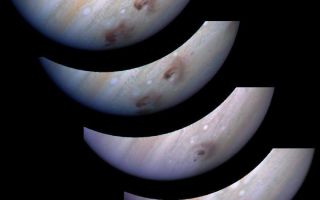
PIA01263: Jupiter G Impact Evolution
|

PIA01264: Evolution of the P/Shoemaker-Levy 9 "Gang of Four" Region
|
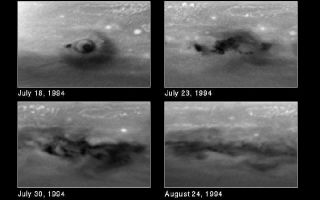
PIA01265: Month-long Evolution of the D/G Jupiter Impact Sites from Comet P/Shoemaker-Levy 9
|
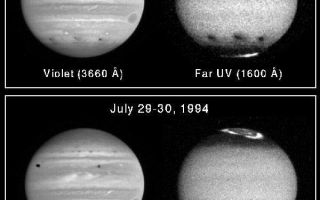
PIA01266: Jupiter's Upper Atmospheric Winds Revealed in Ultraviolet Images by Hubble Telescope
|
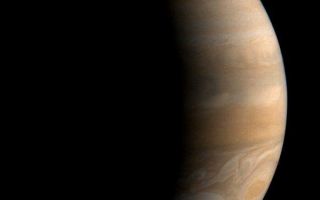
PIA01324: Jupiter
|
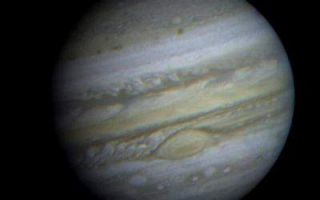
PIA01353: Jupiter
|
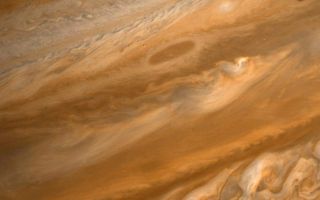
PIA01369: Jupiter from Voyager 2
|
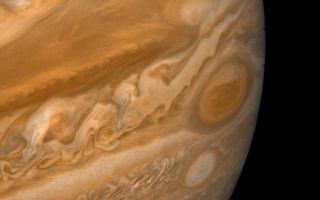
PIA01370: Jupiter's Great Red spot
|
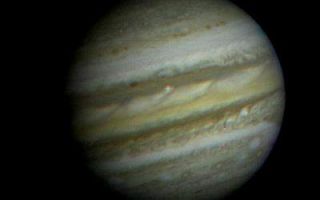
PIA01371: Voyager picture of Jupiter
|
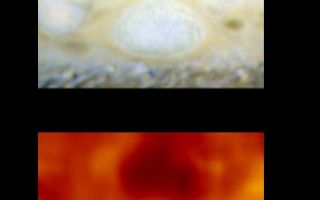
PIA01477: Jupiter's White Ovals
|
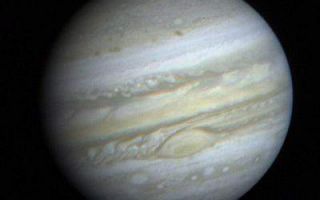
PIA01509: Jupiter Full Disk with Great Red Spot
|
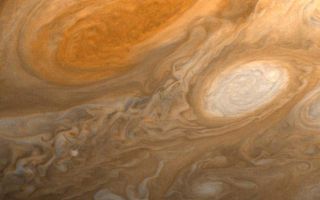
PIA01512: Jupiter's Great Red Spot and White Ovals
|
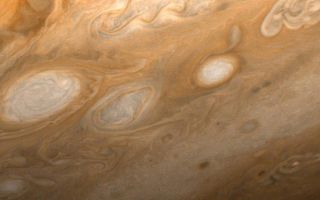
PIA01513: Jupiter - Southeast of Great Red Spot
|
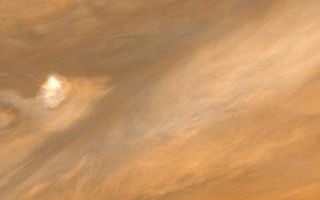
PIA01518: Jupiter Plume
|
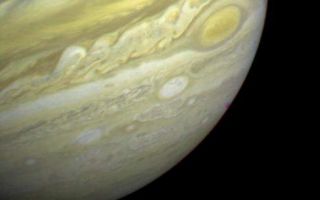
PIA01519: Disturbed Region West of the Great Red Spot
|
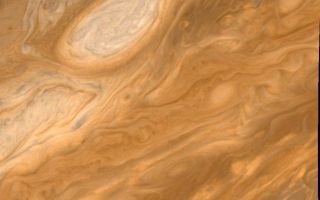
PIA01521: Jupiter White Oval
|